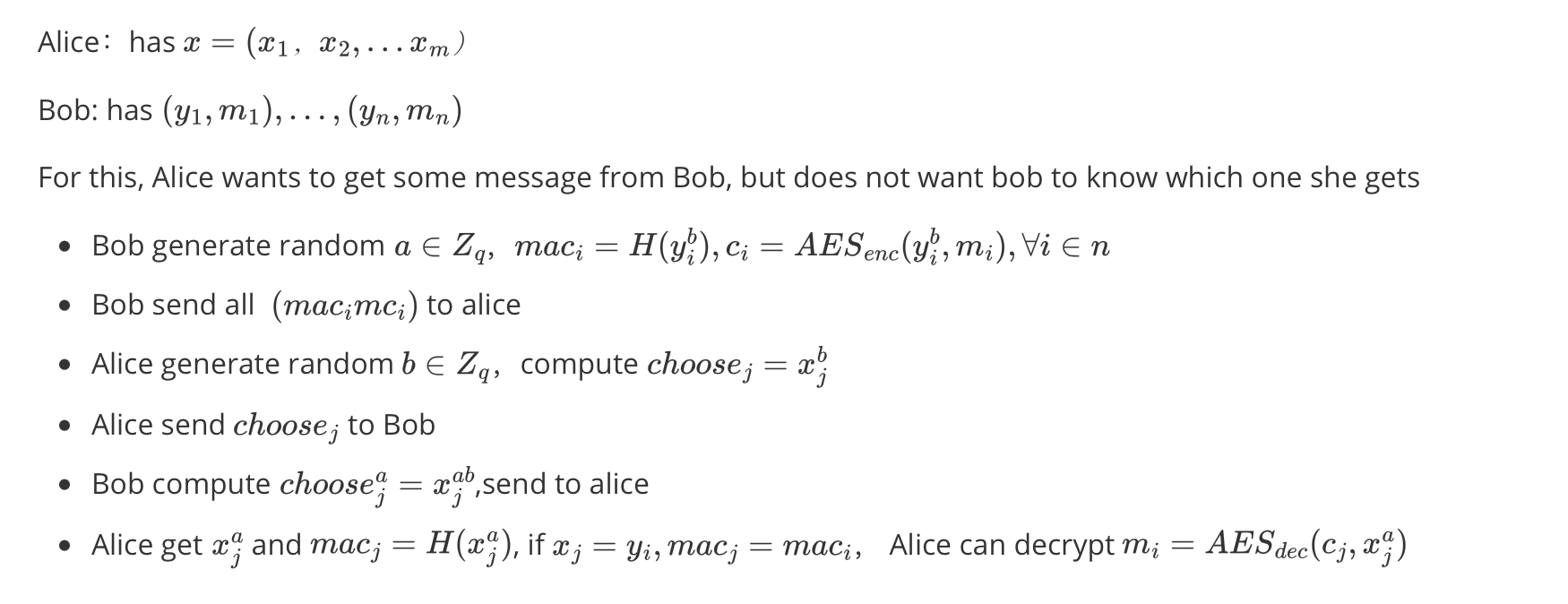It is possible to utilize the OPRF-PSI algorithm to implement a K-V-PIR protocol, as follows:
- Alice wishes to inquire about the values corresponding to $(x_i, x_j)$, while
- Bob possesses data in the form of $(x_1, y_1), (x_2, y_2), ..., (x_n, y_n)$.
Both parties would engage in the OPRF-PSI protocol, such as ECDH. In this process:
- Bob employs his personal $key_b$ to encrypt the $y_i$ data and subsequently transmits $(c_y1, ..., c_yn)$ to Alice.
- Alice, in turn, uses her OPRF $key_a$ to decrypt the data.
For instance, Alice forwards $H(x_i)^a$ to Bob, who computes $H(x_i)^{ab}$ and returns it to Alice. Subsequently, Alice obtains $H(x_i)^b$, which serves as the key for $c_{yi}$.
It is also possible to enhance this specific implementation by incorporating additional MAC mechanisms for data verification.

